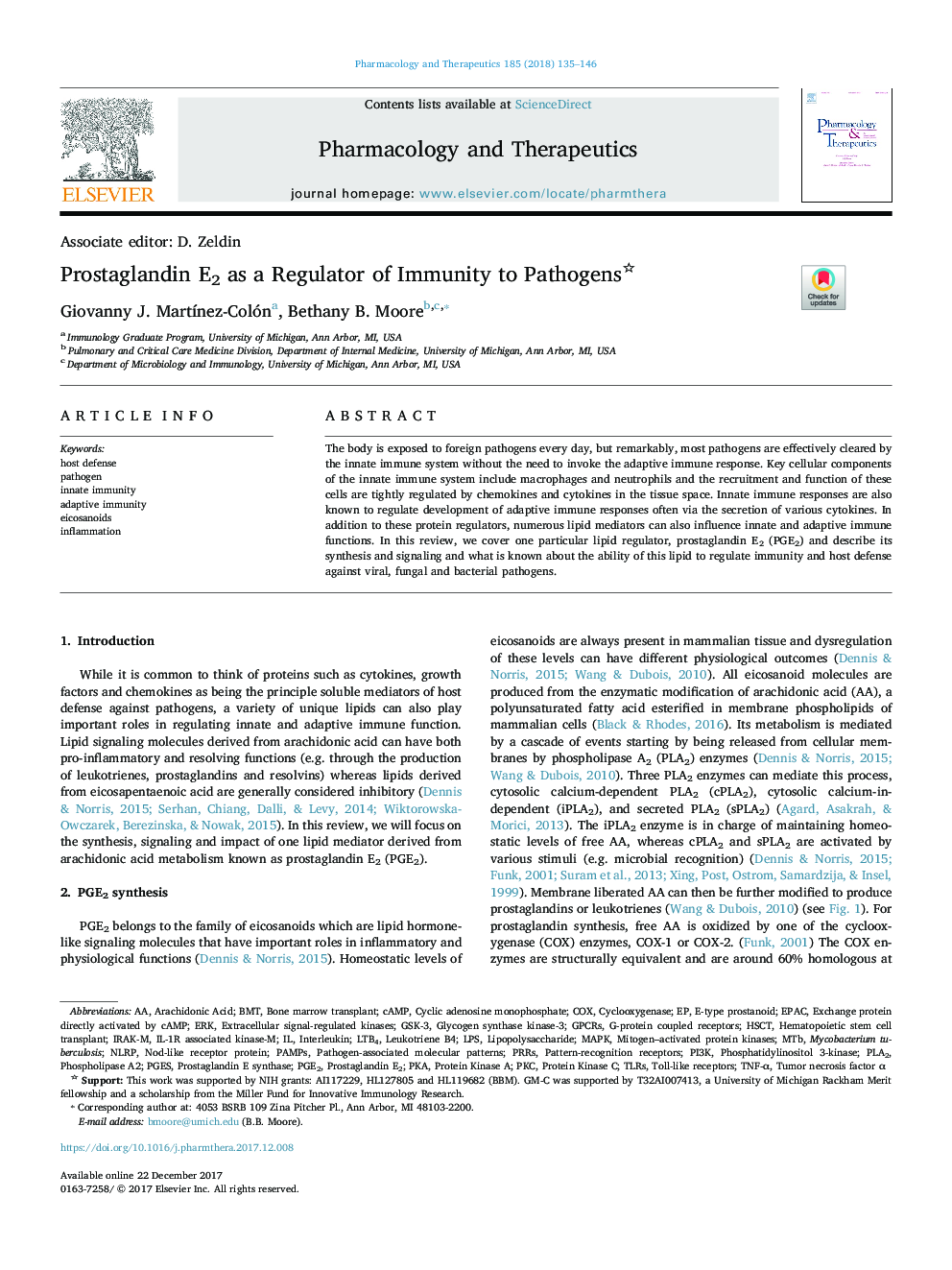| Article ID | Journal | Published Year | Pages | File Type |
|---|---|---|---|---|
| 8536856 | Pharmacology & Therapeutics | 2018 | 12 Pages |
Abstract
The body is exposed to foreign pathogens every day, but remarkably, most pathogens are effectively cleared by the innate immune system without the need to invoke the adaptive immune response. Key cellular components of the innate immune system include macrophages and neutrophils and the recruitment and function of these cells are tightly regulated by chemokines and cytokines in the tissue space. Innate immune responses are also known to regulate development of adaptive immune responses often via the secretion of various cytokines. In addition to these protein regulators, numerous lipid mediators can also influence innate and adaptive immune functions. In this review, we cover one particular lipid regulator, prostaglandin E2 (PGE2) and describe its synthesis and signaling and what is known about the ability of this lipid to regulate immunity and host defense against viral, fungal and bacterial pathogens.
Keywords
PI3KPLA2LTB4EpacMTBBMTGSK-3PKCHSCTPRRsGPCRspKaNlrpPGE2ERKPAMPsLPSCOXPGEScAMPG-protein coupled receptorsMAPKTLRsCyclic adenosine monophosphatecyclooxygenasephospholipase A2Arachidonic acidinflammationpathogen-associated molecular patternsInnate immunityadaptive immunityinterleukineicosanoidsPathogentumor necrosis factor αHost defenseIRAK-MTNF-αPhosphatidylinositol 3-kinaseLeukotriene B4lipopolysaccharideMycobacterium tuberculosisExchange protein directly activated by cAMPprotein kinase AProtein kinase Cprostaglandin E synthaseProstaglandin E2Hematopoietic stem cell transplantbone marrow transplantextracellular signal-regulated kinasesglycogen synthase kinase-3pattern-recognition receptorsToll-like receptors
Related Topics
Health Sciences
Pharmacology, Toxicology and Pharmaceutical Science
Pharmacology
Authors
Giovanny J. MartÃnez-Colón, Bethany B. Moore,
